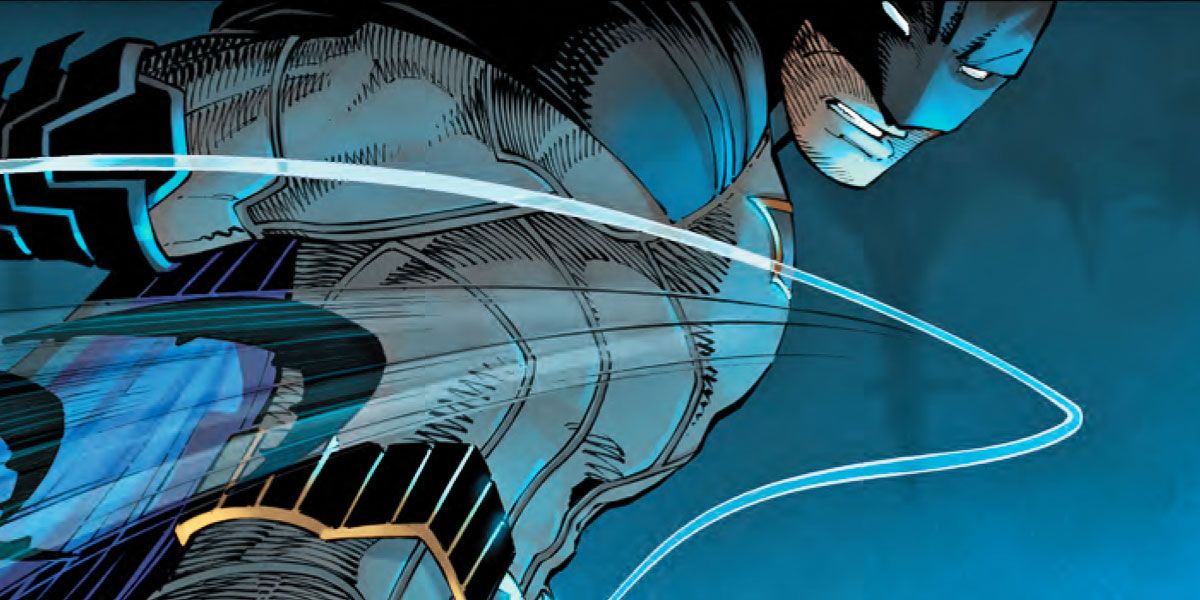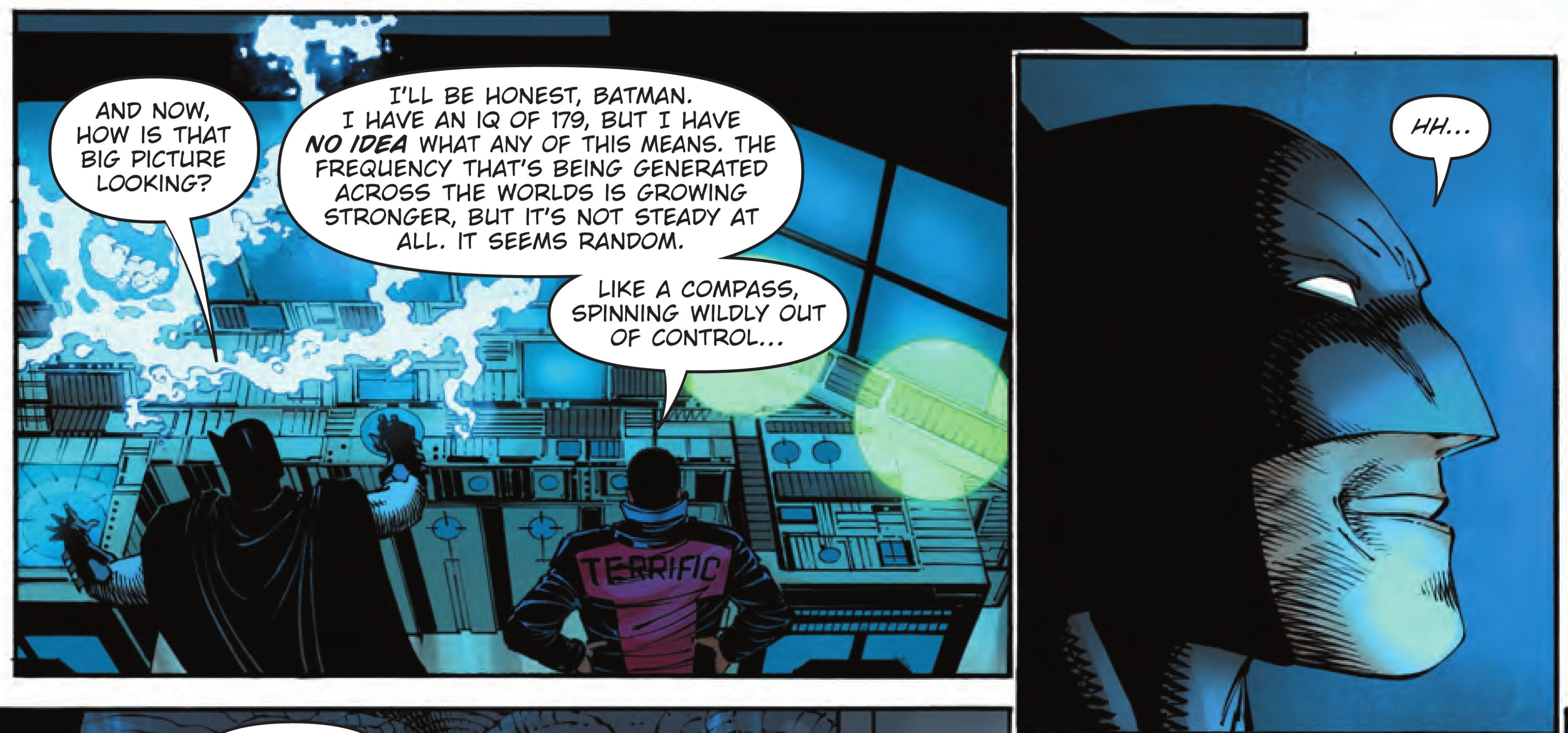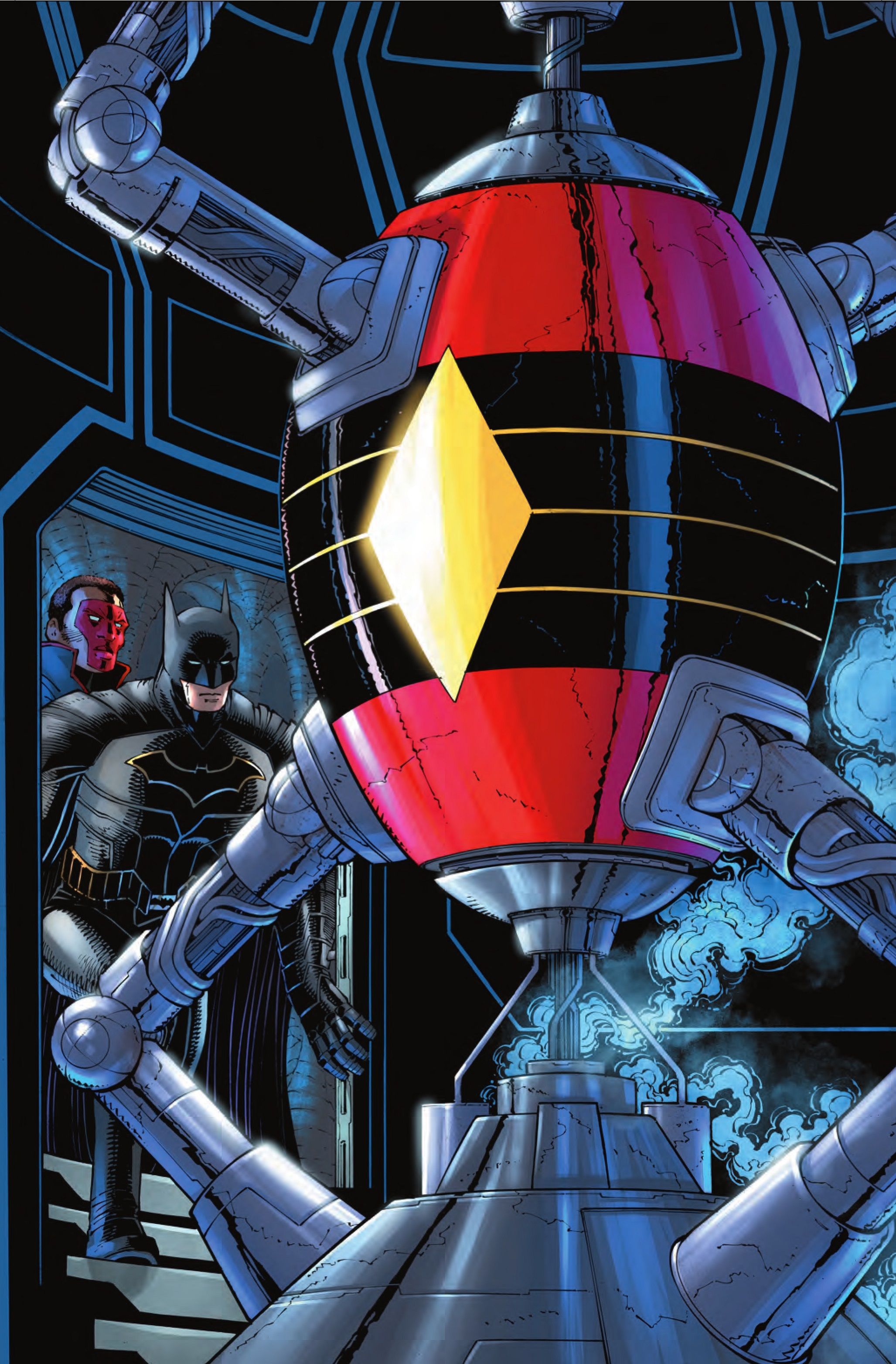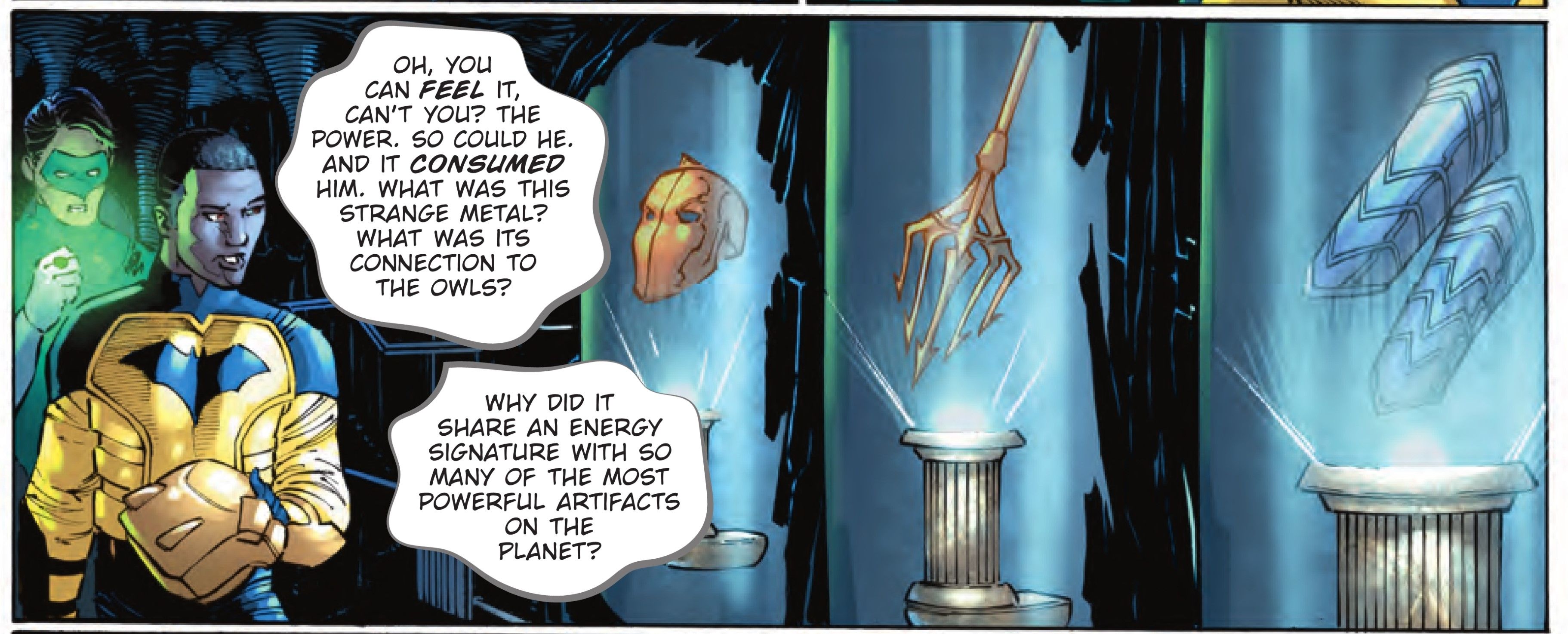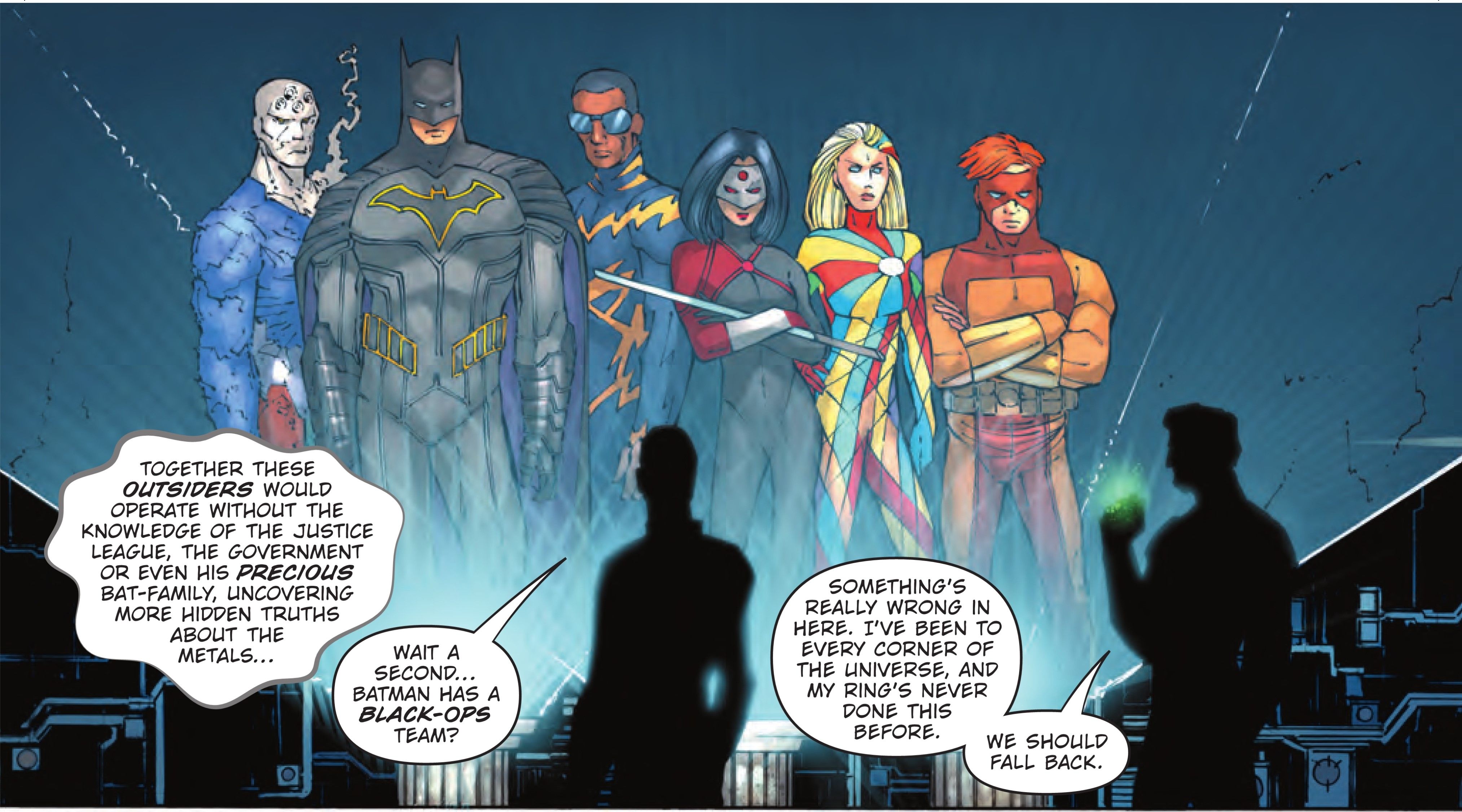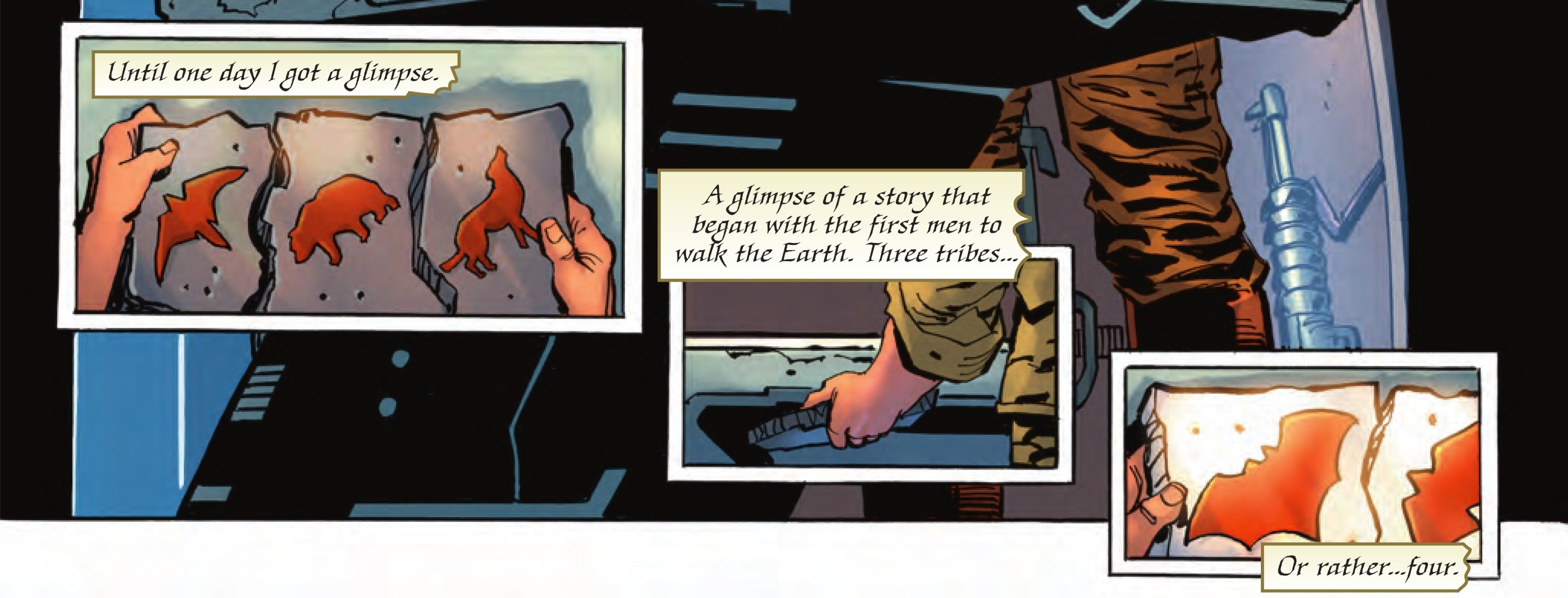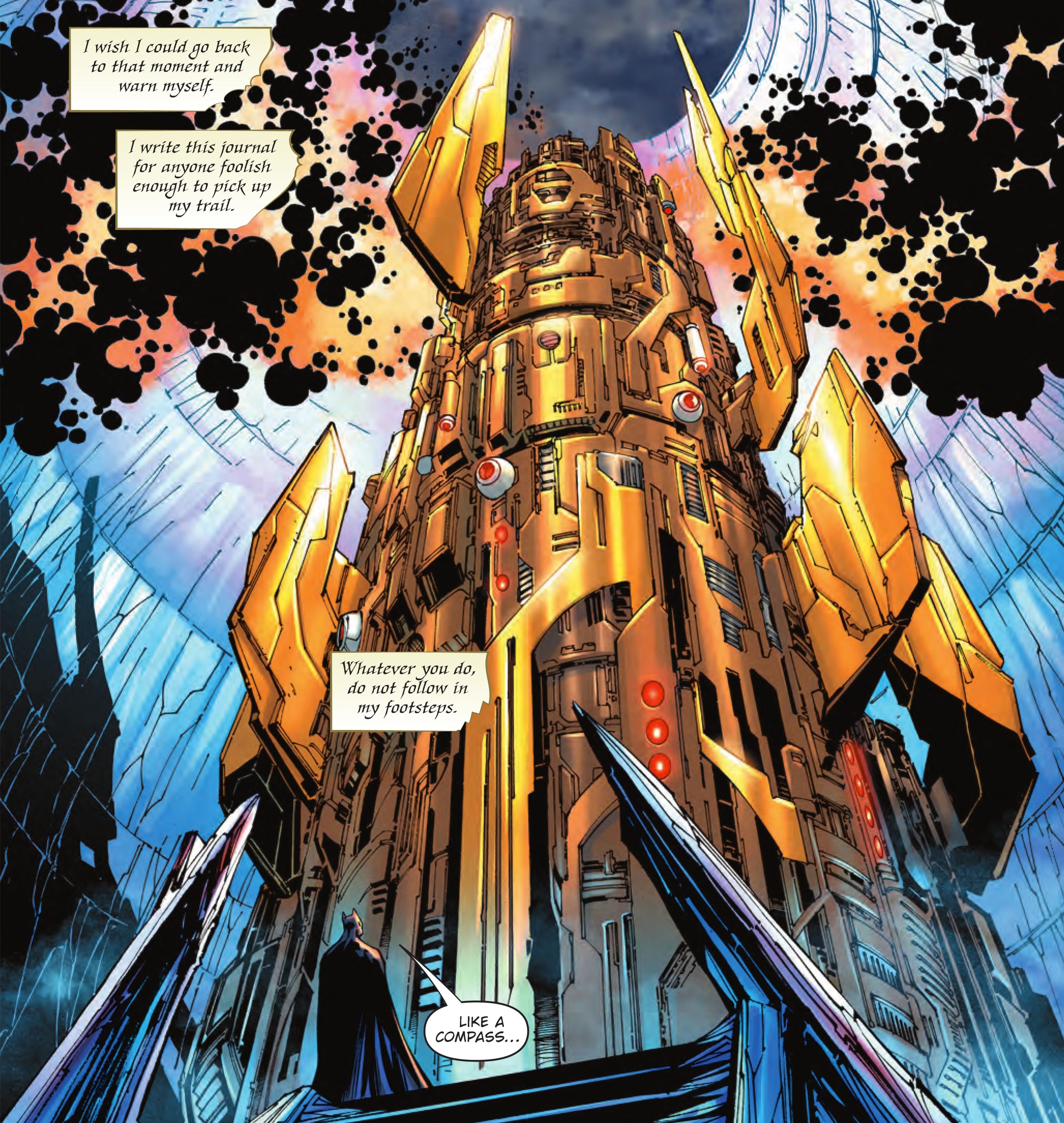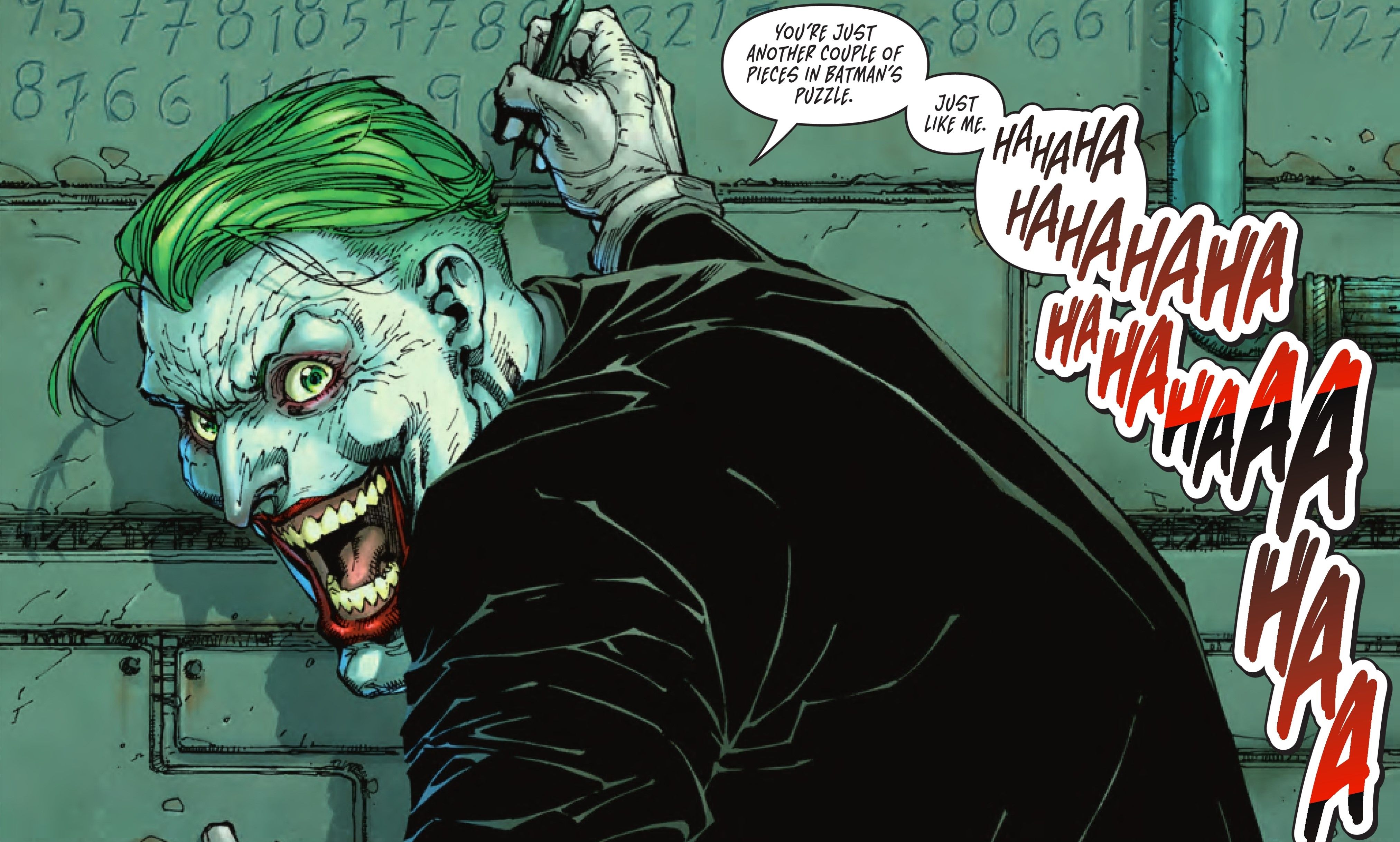DC's big summer storyline has arrived. Its first installment, Dark Days: The Forge, was written by Scott Snyder and James Tynion IV; pencilled by Andy Kubert, Jim Lee and John Romita Jr.; inked by Scott Williams, Danny Miki and Klaus Janson and colored by Alex Sinclair. That's a lot of hands, but judging by the epic nature of this storyline – which literally digs deep to uncover the secret history of the DC Universe – there's a lot going on. In fact, we found clues and Easter eggs on just about every page of DD:TF.
RELATED: Metal, Man! DC’s Dark Days: The Forge, Annotated – Part 1
Strap in and be warned: There will be MAJOR SPOILERS past this point. We're spelunking into the dark caverns of DC lore, trying to keep up with (if not get ahead of) this blockbuster's developments. Our first part (available here) covered the first half of the book; below, we dive into the back half, including some of the biggest surprises of the entire issue.
WHAT'S THE FREQUENCY, KENNETH? (PAGE 15)
RELATED: EXCLUSIVE: Snyder On Joker's Role in Metal, 'Three Jokers' Mystery
"The frequency that's being generated across the worlds" refers to the unique vibrational frequencies which separate parallel universes. While some super-powers (like Vibe's) are designed specifically for interdimensional travel, a super-speedster with control over his or her internal vibrations can also reach a different universe by adjusting those vibrations to match the desired destination. Of course, we first learned this in September 1961's seminal "Flash of Two Worlds" (Flash #123).
PLASTIC FANTASTIC (PAGES 15-16)
That red-and-yellow egg is Plastic Man, created by Jack Cole for August 1941's Police Comics #1. Despite his long comics history (and JLA membership), Plas didn't get much play in the New 52, warranting only a glorified cameo in February 2014's Justice League #25. That appearance was essentially his New 52 origin, but this glimpse of his costume plus the characters' dialogue suggests strongly that he had some superheroic adventures (however brief). Of course, it could also be the case that his pre-New 52 history has come back, as it did with Superman, Hawkman et al. On a cautionary note, if what's under Atlantis does relate to The Obsidian Age, that arc wasn't very friendly to Plas. On the other hand, having a superpower that's basically the opposite of metal sounds like it could be pretty useful here.
1,001 SECRETS OF THE BATCAVE (PAGES 17-19)
Whoever's speaking on Page 17 must have a somewhat mutable (or disguised) voice if Duke thinks it's Alfred Pennyworth or Dick Grayson. We're pretty sure Alfred's voice sounds different from Dick's, although both of them must have some similarities with the real speaker. We'll see his letterforms change as his identity is revealed.
The "metal tooth" on Page 18 refers to Batman #7 (May 2012), when Batman knocked a dummy tooth out of Nightwing's mouth to demonstrate that Dick had been targeted for membership in the Court of Owls. The Electrum in the tooth would have turned Dick into a Talon, one of the Owls' undead soldiers. This is something of a nod to recent versions of the evil Earth-3, where the Batman analogue was Owlman and his young sidekick was Talon. Court of Owls and Talon masks are among the artifacts on this page.
Other Batcave artifacts include Doctor Fate's helmet (perhaps relating back to Nabu's presence in Khufu's court), an Atlantean-style trident and what appear to be Amazonian gauntlets (which, according to March-April 1952's Wonder Woman #51, were made of the metal Amazonium).
Dionesium (referred to on Page 19) comes from the aforementioned Batman: Endgame arc, where it was used to make the Joker's super-potent venom. As described in March 2015's Batman #38, it's been used by Vandal Savage and in Rā's al-Ghūl's regenerative Lazarus Pits. In the follow-up Superheavy, exposure to Dionesium healed Bruce Wayne's body but erased his memory of being Batman.
INSIDE THE OUTSIDERS (PAGE 19)
The original group of Outsiders – Metamorpho, Black Lightning, Katana, Halo and Geo-Force – are pictured here in their most recent incarnations. They first appeared as a group in July 1983's Brave and the Bold #200. Most recently, the Outsiders (led by Red Robin) showed up in a few issues of Batman Incorporated in 2011 and 2012; but beyond that haven't had much of a New 52 presence. (This might have been due to an unrelated group of "Outsiders" in the New 52's Green Arrow series.) Regardless, Metamorpho and Black Lightning each had their own anthology features, and Katana had a short-lived ongoing series. Halo was in the Batman Incorporated group along with Looker and Freight Train (not pictured here), so that leaves only Geo-Force without a pre-existing New 52/Rebirth incarnation.
Given the geological and metallurgical nature of Dark Days, it's worth noting that Metamorpho can turn himself into any element, Geo-Force controls the earth (and can fire lava blasts), Katana has a mystic (metal) sword, and Black Lightning and Halo manipulate different forms of energy. Lucky for Batman that his recruiting from 34 years ago worked out so well for the current investigation!
Having them "operate without the knowledge of the Justice League" represents a distinct change from their classic backstory, since Batman famously quit the League before bringing together the Outsiders. In fact, Metamorpho and Black Lightning had previously rejected League membership, although both would become Leaguers in the future. There have been multiple Outsiders teams, including ones run by Nightwing and Arsenal. Batman's also been on alternative Justice League teams, including the New 52's Justice League International and the current Justice League of America.
FOUR TRIBES AND A MANHAWK (PAGES 21-22)
The white-and-red mask belongs to a Manhawk, a massive bird-creature with a more humanoid head. Their masks emit blinding light and matter-displacement beams. First appearing in August-September 1962's Brave and the Bold #43, they were created by Gardner Fox and Joe Kubert. In the context of Hawkman's Silver Age history, their invasion of Thanagar led directly to the creation of the winged Thanagarian hawk-police.
Although they're not named on the page, the icons on Page 21 look like icons for Hawk, Bear and Wolf groups. The Hawk tribe/clan clearly ties into the overall story, and specifically to Carter/Khufu's history of reincarnation. The Bat symbol may well come from 2010's Batman: Return of Bruce Wayne miniseries, where a time-traveling Batman started off at the dawn of humanity and jumped forward through various eras.
As discussed above, the Wolf Clan was the original name of Vandal Savage's caveman tribe, which was later called the Blood Tribe. The enemies of Vandal's Wolf Clan, including the future Immortal Man, were the Bear Tribe. Anthro, the so-called "first boy on Earth," came from the Bear Tribe; but we're not sure whether it was the same one. In a much later era, the Wolf Clan produced the 15th-century Native American hero Super-Chief (created by Gardner Fox and Carmine Infantino and debuting in February-March 1961's All-Star Western #117).
That hawk-ship on Page 22 may not be the same one which crashed in ancient Egypt. In the JSA account mentioned above, Khufu used its Nth metal to make various items. Since this one looks relatively intact, what's its story?
THE BASEMENT AT THE TOP OF THE WORLD (PAGES 23-28)
Although the Golden Age Superman had a mountainside hideaway, the Fortress of Solitude was first seen in June 1958's Action Comics #241. It's traditionally located near the North Pole (and Santa's Workshop), although it's been in the Antarctic and South America. The Fortress is inaccessible to just about everyone except Superman and Supergirl, usually because it requires Kryptonian-level super-powers to enter. For example, the original Fortress opened via a gigantic keyhole not unlike the one on Page 26.
By the way, we feel compelled to observe that this Superman is a combination of the New 52 and pre-Flashpoint versions; and therefore a living symbol of how DC's continuity is being rewritten and re-integrated. For details, see the recent Superman Reborn crossover, which (along with reconciling Superman's history) integrated much of the DC Universe's pre-Flashpoint history with the New 52 stories from the past five-plus years.
Scott "Mister Miracle" Free, super escape artist, was created by Jack Kirby and first appeared in April 1971's Mister Miracle #1. He was last seen saying goodbye to his soulmate Big Barda in July 2016's Justice League #50; but he'll have a new series soon, courtesy of writer Tom King and artist Mitch Gerads. We think it's interesting that Mister Miracle would react so strongly to what Batman's got hidden, considering that he and the rest of the New Gods were barely in either Crisis on Infinite Earths or Infinite Crisis.
Batman's admission that he's "not trying to keep people away this time" shows a lot of self-awareness, given his history with secret plans which backfire (as in the JLA arc Tower of Babel, the Bat-crossover War Games and the OMAC Project miniseries). Thanks to Futures End, though, we're still wary about what he and Mister Terrific are working on.
Page 28 depicts a multiversal tuning fork, used by the Monitor in 1985's original Crisis On Infinite Earths to protect five key parallel universes from the Anti-Monitor's antimatter clouds. In 2005-06's Infinite Crisis, Earth-Three's Alex Luthor used it (along with the Anti-Monitor's corpse) to re-create the infinite Multiverse, albeit only briefly. Here, it looks like Batman is using it to track "dark energy" from the Multiverse.
KILLING TIME? (PAGES 29-30)
The final reveal may prove to be the book's most controversial, as Hal, Duke and the readers discover the Joker locked away in the Batcave's deepest vault. The Endgame arc (and Batman #37 specifically) suggested that the villain was over 100 years old, if not immortal; while Justice League #50 teased further that there were three different Jokers. His observation that the mystery "stretches back to the dawn of time" not only plays into these theories, but postulates a parallel with Return of Bruce Wayne's time-hopping.
To be fair, Batman's mid-century "sci-fi" period featured the occasional Joker doppelganger in its time-travel stories, like the Roman Empire's Jester (August-September 1944's Batman #24) or the year 2050's lawman Rokej (June 1950's Batman #59).
The Joker's taunt about being "just another couple of pieces in Batman's puzzle" provides a counterpoint to Batman's earlier admission that he's not trying to hide anything. Green Lantern is one of Batman's oldest allies, while Duke is one of his newest. In terms of puzzles, though, we're wondering what happened to the benign ex-Joker who had a terrifyingly pleasant conversation with ex-Batman Bruce Wayne in March 2016's Batman #48. That guy was ready to kill himself, but this one? Not so much. Of course, if there really are three Jokers, that would help explain things.

